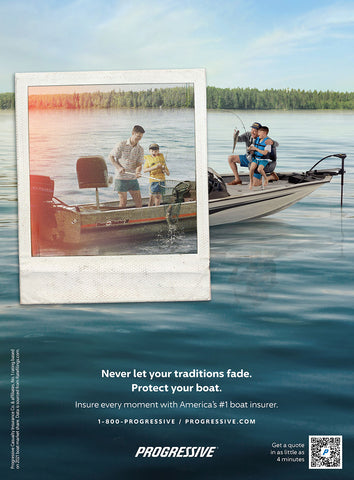As soon as our lines were organized on the calm water, Dad’s bobber went down. “There he is, Jerry!” shouted an always enthusiastic Austin Moser. Dad set the hook. The chinook jumped, ran and dove. Pretty soon it was in the net.

Immediately our lines were back in the river, continuing down the same path. That’s when Joey Pyburn hooked up. We had a shot at a double, but I air balled the hookset. Minutes later, Joey was on the board, as was our buddy, Brandon Spear.
We were bobber dogging a stretch of water Dad and I had never fished, Hanford Reach, on the upper Columbia River. We were with good friend and veteran guide, Austin Moser, of Austin’s Northwest Adventures.
Moser starts fishing this upper section in mid to late September, depending on runs and what’s happening on the lower Columbia. I’ve fished Buoy 10 a lot, as well as other sections of the Columbia River. When it comes to salmon fishing the Columbia, Hanford is a breath of fresh air.
Once we completed the 500 yard drift, Moser motored back up to the same spot. On the boat ride upstream, the sun floated up behind us. The glowing, orange sunrise making it’s way through a smokey haze that hung on the horizon, was a sight to behold. Soon, morning winds picked up, the air cleared, and the chinook just kept biting.

Guide, Austin Moser, netting one of many chinook brought to the boat via bobber doggin’.
While these are the same salmon being pursued at Buoy 10, where they enter the mouth of the Columbia River looking like sheets of tin foil, remember they’ve traveled some 400 miles to get to Hanford waters. The river is warm, and with the long journey, the salmon have turned color. Many have started absorbing their scales in preparation for the upcoming spawn. But there are some big fish to be caught.
What I wanted was a giant tomato red salmon, one over 40 pounds. But catching a red dragon didn’t happen, not on this trip. Salmon that were too far advanced we brought to the side of the boat, unhooked and revived them, and sent them on their way. We kept the best looking fish, and they were good eating. Their flesh was still oily, making for great smoking, too.
We launched at the Vernita Bridge boat ramp, along with loads of other anglers. But here, space isn’t an issue as it is at Buoy 10 and other parts of the Columbia. With some 50 miles of clear, big, wide, easy flowing water to fish below and above the boat ramp, it never feels like you’re in competition to find a place to fish. In fact, that’s one of the things I found most appealing with this fishery. All day long boats were launching and pulling out. Families and friends came and went, well into the afternoon. No one was in a rush. Everyone was in a good mood. The weather was great and the conditions, very comfortable. It’s simply a fun, easy fishery to navigate, and there are many ways to target these chinook.
“Hanford Reach is historically a trolling fishery,” notes Pyburn of Ray’s Bait Works. “You’ll see boats running wrapped plugs with sardines or tuna, and fishing prawn spinners. But what we did with Austin, boon dogging eggs, is a new thing for these waters, and we were likely more effective than anyone out there, from what I could see. Austin’s figuring out this egg thing, and what he has going on is going to transform Hanford into a red-hot egg fishery, you just watch.”

Joey Pyburn with a good start to the morning at Hanford Reach.
I’ve fished eggs with Moser in many places, from Alaska to Washington, and I love his passion for curing eggs. Clean, blood-free skeins are a must, as is tedious management of the eggs during the entire curing process. Every afternoon and well into the evening, Moser is curing eggs, rotating them, air drying and bagging them. The egg curing process never stops, and it’s not easy in the hot conditions this time of year. The best part is, it’s working.
“I really like Pro-Cure’s line of bright red egg cures for this section of river,” notes Moser. “Their Wizard and standard Bait Cure are tough to beat.”
Once the eggs are cured, Moser attains the perfect texture by spreading out the moist baits on paper towels, and sprinkling Pro-Cure Borax over them. “You have to watch this last step, closely,” offers Moser. “I like doing this in a cool shop or garage, but this time of year it can be hot, so I’m often up late, moving eggs from refrigerators to the garage. If it’s warm out, I’ll expedite the setting up of the eggs with the help of an oscillating fan. Getting the perfect texture is the final step of the curing process, and moving air helps control and achieve this.”
Moser is careful not to leave the eggs out too long, for he doesn’t want them to turn dark or harden because this would render the entire curing process, a failure. The goal is an egg that’s firm, yet tacky to the touch. You want a bait that will stay on the hook when cast a long way, and one that will withstand being fished several hundred yards, nonstop, in warm water. If you’re serious about bobber dogging eggs at Hanford, you want a quality egg, otherwise you’ll be wasting your time. The brighter and more firm the egg–without being too hard–the more effectively and longer it will fish.

Author, Scott Haugen, truly enjoyed his experience fishing Hanford Reach, for many reasons.
Often times we tipped our cured eggs with other baits. Sometimes bites came on sand shrimp tails threaded onto the bottom hook. Sometimes bites came on chunks of herring or mackerel added to the eggs. We also did well with a big cluster of eggs on the top hook, a chunk of baitfish slid onto the same hook, and a sand shrimp tail threaded onto the bottom hook. Moser had multiple spools of pre-tried, two-hook leaders on the boat, making for quick and easy leader changes, as needed.
I’ve been bobber dogging for many years, for both salmon and steelhead, but what I liked most about fishing this way at Hanford was the fact very few people were doing it. Because of that we could cover long stretches of water, uninterrupted. The river here is flat, with a steady flow rate and a gravel bottom. Hangups are few, and many times we covered over a mile of water without taking our gear out of the water.
While most anglers trolled upstream and downstream, and backtrolled plugs though deeper sections in the middle of the river, we had the banks to ourselves. We started early in the morning to see where fish were rolling, and that’s where we concentrated our efforts all day long, even after the fish quit showing. “Just because they’re not jumping and rolling doesn’t mean they’re not there,” notes Moser. “These sections of water near shore get very little pressure.”
Everyone in the boat fished the same rods with the same weights and the same Beau-Mac Bobber Doggin’ Floats. This allowed Moser to run the boat and keep all the lines traveling equidistant from one another, while moving at the same speed. If someone hooks a fish, the others can sometimes keep fishing, depending on what the fish does and what the rate of the river flow is in that spot. If someone gets hung up or a whacky current kicks their gear out of line, simply reel in and re-cast. It’s one of the most efficient ways to cover shallow water there is, and when the salmon are holding close to shore, it’s extremely effective.

The upper Columbia River is made for bobber doggin, and is a great way to cover water.
I’m a fan of bobber dogging because it’s a team effort. Yes, the captain runs the boat to control the speed of the drift, but it’s up to each angler to make accurate casts and manage their lines. The fun part is you can watch everyone’s bobber at the same time, so the level of anticipation greatly escalates. Communication is required in order to maximize the efficiency of this approach, which makes the experience even more enjoyable.
Another fun aspect of bobber dogging is that each angler can experiment with different terminal gear. Be it egg cures, drift bobbers or baits, everyone is free to explore. This is great way to find what fish like, and will confirm that often times all it takes is a change in bait or scent to turn on a bite.

Don’t underestimate the power of baitfish chunks–like this mackerel–when it comes to bobber doggin’. The smallest of chunks release a lot of oil and establish a scent trail salmon will follow.

Late one morning, bright red eggs, sand shrimp and herring made for a bait the chinook couldn’t resist.
While fishing a stretch late one morning, Brandon Spear got a bite, then another. The fishing had been slow for over an hour, but Brandon got five strikes, releasing two and keeping one chinook. The rest of us didn’t have a nibble. Come to find out, Brandon was fishing a bright red egg topped with herring and tipped with sand shrimp. The seafood medley proved irresistible. We all switched to that bait combination and caught fish.
I love fishing eggs, no matter how it’s done, and there’s no doubt Moser is on to something. It goes to show how thinking outside the box can not only provide more fish, but create greater interactive fishing experiences for everyone in the boat. That’s just one of the many reasons I enjoy fishing with this man, and can’t wait for our next adventure.
Note: To order signed copies of Scott Haugen’s popular line of salmon and steelhead fishing books, visit scotthaugen.com. Follow his adventures on Instagram and Facebook.

MORE GREAT ARTICLES FROM STS
PLUGGING BIG WATER FOR FALL SUMMER STEELHEAD THE SNAKE RIVER SOLUTION - BILL HERZOG















1 comment
Would’ve been helpful to see the entire set up from bobber, weight, and hook.